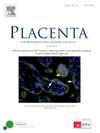基于人工智能的宏观胎盘评估预测出生体重:回顾性研究
IF 3
2区 医学
Q2 DEVELOPMENTAL BIOLOGY
引用次数: 0
摘要
本研究旨在利用人工智能(AI)对宏观胎盘图像进行多因素分析,预测新生儿出生体重。方法回顾性分析2021年1月至2021年12月在峨山医学中心进行胎盘组织病理学检查的单胎孕妇的资料。采用4种回归分析方法,共将15个胎盘特征纳入机器学习。计算各算法的预测性能矩阵,包括平均绝对误差(MAE)、平均相对误差(MRE)、均方根误差(RMSE)和R2评分。根据胎盘病理结果将研究人群分为两组,随后进行比较。结果共纳入131例。对于使用所有特征的机器学习分析,使用了所有15个胎盘特征。使用单变量预测特征的第二次分析通过排除与出生体重相关值为<;0.5的五个特征来进行。利用人工智能开发了一种预测算法,最小MAE为257.72 g, MRE为0.15,RMSE为338.42 g,最大R2评分为0.77。非病理性胎盘组表现出比病理性胎盘组更高的整体预测性能。对机器学习模型的亚分析(不包括胎盘重量)显示了类似的趋势。结论将机器学习应用于胎盘多因素分析的人工智能算法可用于新生儿出生体重预测。这种算法可能有助于估计胎儿生长,如果它可以通过分析胎盘测量的变化,潜在地适应产前超声检查。本文章由计算机程序翻译,如有差异,请以英文原文为准。
Birth weight prediction using artificial intelligence-based placental assessment from macroscopic photo: a retrospective study
Background
This study aimed to predict newborn birth weight through multifactorial analysis of macroscopic placental images using artificial intelligence (AI).
Methods
We retrospectively reviewed the data of singleton pregnant women whose placentas were histopathologically examined at Asan Medical Center from January 2021 to December 2021. A total of 15 placental features were included in the machine learning using four regression analysis methods. Predictive performance matrics, including the mean absolute error (MAE), mean relative error (MRE), root mean square error (RMSE) and R2 score, were calculated for each algorithm. The study population was divided into two groups according to placental pathological findings, which were subsequently compared.
Results
A total of 131 cases were included. For the machine learning analysis using all features, all 15 placental features were used. The second analysis using univariate predictive features was performed by excluding five features whose correlation values with birth weight were <0.5. Using AI, a predictive algorithm was developed, with a minimum MAE of 257.72 g, MRE of 0.15, RMSE of 338.42 g and a maximum R2 score of 0.77. The group with non-pathologic placentas showed a higher overall predictive performance than that with pathological placentas. Subanalysis of the machine learning model, excluding the placental weight, showed similar trends.
Conclusions
The AI algorithm developed using machine learning for multifactorial analysis of the placenta can be used for neonatal birth weight prediction. This algorithm might assist in estimating fetal growth if it can potentially be adapted for prenatal ultrasonography by analyzing changes in placental measurements.
求助全文
通过发布文献求助,成功后即可免费获取论文全文。
去求助
来源期刊

Placenta
医学-发育生物学
CiteScore
6.30
自引率
10.50%
发文量
391
审稿时长
78 days
期刊介绍:
Placenta publishes high-quality original articles and invited topical reviews on all aspects of human and animal placentation, and the interactions between the mother, the placenta and fetal development. Topics covered include evolution, development, genetics and epigenetics, stem cells, metabolism, transport, immunology, pathology, pharmacology, cell and molecular biology, and developmental programming. The Editors welcome studies on implantation and the endometrium, comparative placentation, the uterine and umbilical circulations, the relationship between fetal and placental development, clinical aspects of altered placental development or function, the placental membranes, the influence of paternal factors on placental development or function, and the assessment of biomarkers of placental disorders.
 求助内容:
求助内容: 应助结果提醒方式:
应助结果提醒方式:


